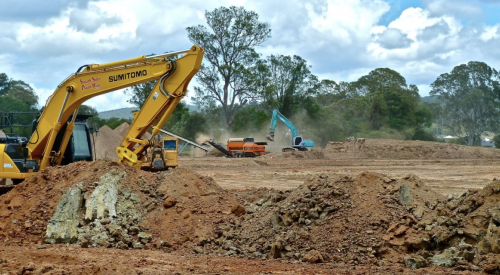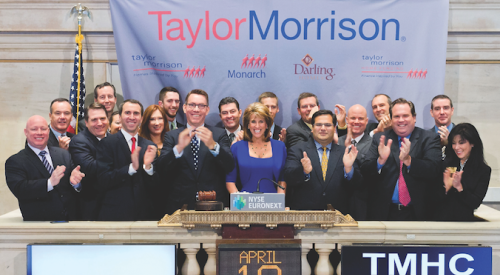|
|||||||||||||||||||||
Among the 150 companies occupying the middle of the Giant 400 — those with housing revenue of $56 million to $145 million — are market leaders experiencing high levels of throughput and a good return on assets. Their average profit of 9.04% is a point and a half better than that of Giants at or below the $56 million threshold. For many the question is whether to significantly reinvest in a new market or a more aggressive land position to make the jump to more closings and higher revenue.
Such is the case with Ball Homes. As the market leader in the Louisville and Lexington, Ky., areas, Ball “is about as big as we want to get” in those places, CEO Mike Ball says. Growth means setting up a new operation in Knox-ville, Tenn., or somewhere else, he says. And who can blame him for hesitating to do so? The firm did $110 million in revenue on 754 closings last year and has been on the same steady clip for the better part of a decade.
After seven years of planning, Christopherson Homes in Santa Rosa, Calif., recently expanded outside of its north San Francisco Bay area base to establish a new division two hours east in Sacramento. Like most medium-size Giants, Christopherson is doing a lot of things well regarding labor and land in a given market area, but it must start from scratch in new markets. To Christopherson, that means developing a good reputation with trade contractors and establishing contacts with land sellers. Regarding the latter, president Keith Christopherson says it pays to be active in the community. The former requires a more concentrated effort.
“We have a trade contractor advisory group,” he says. “The goal is to try to align our operations so we can better address quality and profitability issues. And we have had the pick of the trades as time has gone by.”
MBK Homes of Irvine, Calif., falls into the category of midsize Giants building a platform for a much larger company. MBK has grown to 327 closings since its founding in 1996. This year, president Stephan Markowitz says, the company will jump into major master-planned communities in Southern California. It will open communities in Rancho Mission Viejo’s Ladera Ranch and on Newhall Ranch in Valencia as MBK builds its volume to more than 400 units.
Many midsize Giants are looking to process and operational improvements as ways to add profitability before significantly reinvesting in the business. At Carlsbad, Calif.-based Brehm Companies, CEO Forrest Brehm says the focus is on increasing market share in Riverside and San Diego counties by continuing to cater to first-time and first move-up buyers.
“We are also focused on reducing cycle times and the ratio of closings per employee,” says Brehm, whose firm closed on 342 homes last year. “Further, we are focused on enhancing customer satisfaction and referrals.”
Regulation and land availability are pre-eminent issues for all builders in the Portland, Ore., area, but this is particularly true for one of the market leaders, West Hills Development Co., which operates as Arbor Custom Homes. With Portland’s 22-year-old urban growth boundary, the competition for land is fierce, says Arbor land expert Phil Moreford. “Finding a 50-acre site is huge for us,” he says.
The positive side, says marketing vice president Bruce Dunlap, is that the growth boundary has enabled local officials to shrink lot sizes dramatically, to as small as 2,800 square feet. But that also has kept Arbor on its toes operationally, as 70% of the product it builds has been redesigned to fit the smaller lots. With such a limit on growth, Arbor recently implemented even-flow construction and began tracking customer satisfaction.
Understanding customers better is a consistent theme throughout the Giant 400. For Scott Allen, president of Citation Homes in Irvine, it is a question of establishing clearer lines of communication to a more demanding group of consumers. It led Citation to implement a new walk-through just to check on options before plasterboard is installed.
“One of the things we’ve found is that the customers don’t always understand what they are getting,” Allen says. “So we’re looking for ways to better educate our sales staff on the options and up-grades they are selling as well as our customers on what they are buying.”












